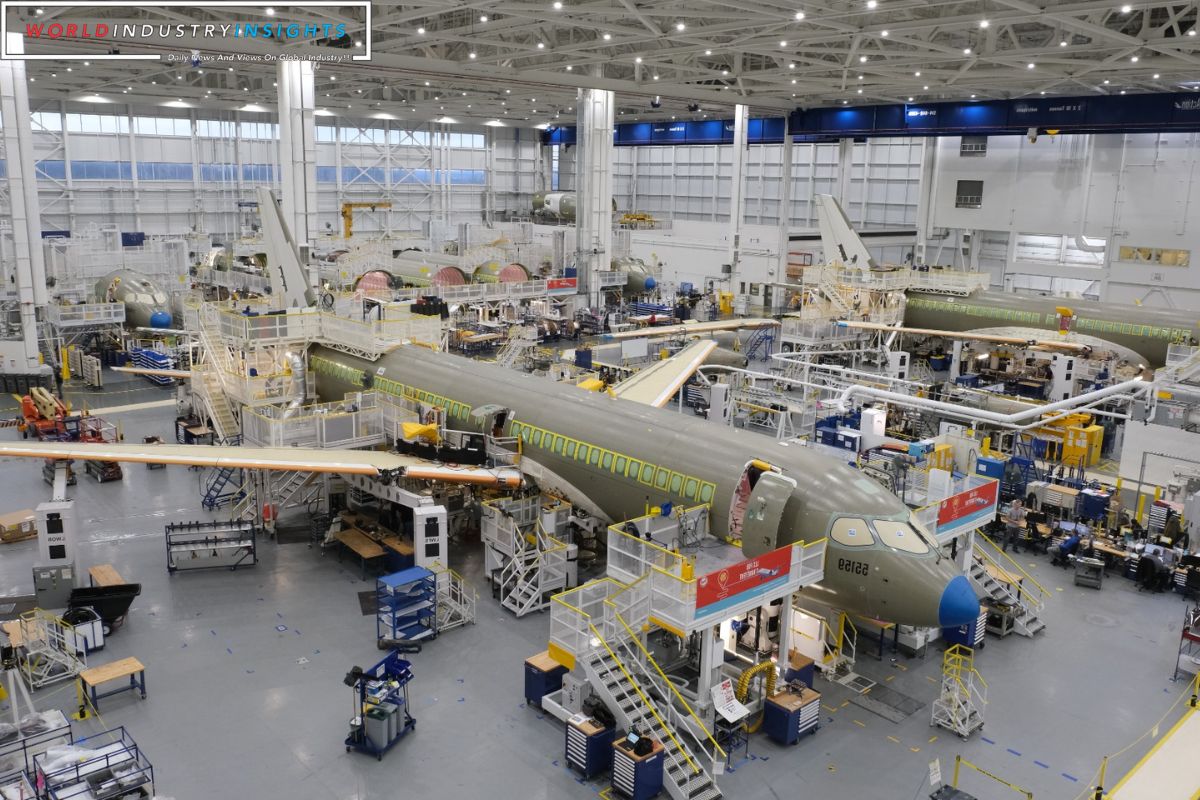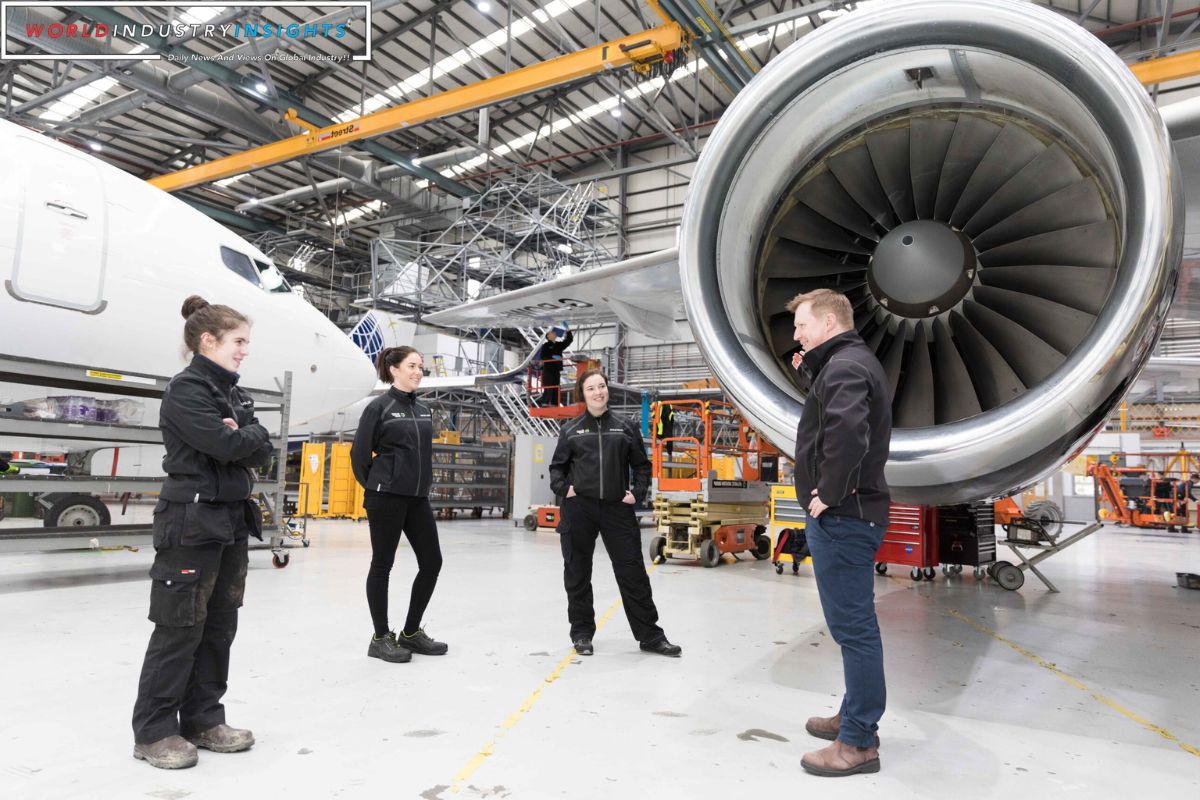Canadian Aerospace Grapples: In the bustling realm of Canadian aerospace, the quest for skilled workers has become both essential and costly. Hugue Meloche, CEO of Meloche Group, reveals the lengths he goes to, spending over C$10,000 per skilled foreign worker, a strategy he deems necessary to keep pace with soaring orders and the surge in production from clients like General Electric.
In a bid to fill staffing shortfalls, Meloche Group, based in the Montreal area, embraced international recruitment, hiring 20% of its 500-strong workforce from countries such as Mexico, Tunisia, and Brazil. This move, while addressing critical shortages, has added at least C$1 million in costs to the company’s annual revenue of around C$100 million.
The aviation industry, particularly smaller suppliers with limited resources, grapples with the repercussions of a tight manufacturing labor market. The aftermath of retirements during the COVID-19 pandemic’s peak has left North American aircraft repair shops and suppliers, especially in Canada, scrambling to recruit a growing number of skilled workers from abroad.
Meloche’s company, situated in the Canadian province of Quebec, goes the extra mile to support its international recruits. Offering loans, short-term housing, and a dedicated team of four employees to assist newcomers, Meloche emphasizes that, for them, immigration is not just an option but a necessity.
The challenges faced by smaller suppliers extend to the complexities of dealing with additional costs, which, in turn, may lead to difficult choicescutting costs elsewhere or passing on the burden to customers. As planemakers Airbus and Boeing drive demands for competitive pricing and increased production, the ripple effects are felt across the industry.
Also Read: Motor Sichs Western Odyssey: Navigating Challenges to Revitalize Ukraines Aerospace Industry
While plane and engine makers like Bombardier, Airbus, and Boeing have more substantial resources to attract domestic talent with better incentives, they too are not immune to the global labor challenges. Bombardier, for instance, anticipates that international recruitment will represent a significant portion of its Quebec production workforce in the coming years.
The dynamics of recruiting foreign workers vary for larger corporations and smaller suppliers. While major players can offer comprehensive support, including housing and perks, smaller suppliers find themselves stretched thin, with human resource departments tasked with unforeseen responsibilities such as apartment hunting.
The struggles of smaller suppliers in retaining talent are compounded by the advantages afforded by immigration rules, ensuring loyalty from foreign hires. As Hugue Meloche observes, “The small suppliers are drowning,” emphasizing the need for ongoing recruitment efforts in Canada’s aerospace hub.
Recruiters note that Canadian aerospace companies tend to rely more on foreign workers compared to their U.S. counterparts, given the availability of immigration programs facilitating such hires. Yet, even in the United States, a growing shortfall of aviation maintenance workers prompts consideration of foreign talent, with discussions about special visas for in-demand jobs in progress.
The story is not limited to Canada, as aircraft repair shop KF Aerospace in British Columbia also grapples with the challenges. The company has seen a significant increase in skilled foreign workers, investing over C$11,000 per individual in relocation and immigration costs.
As the aerospace industry navigates these complexities, the imperative remainssecuring and retaining skilled talent in a fiercely competitive and evolving landscape.
Our Reader’s Queries
Why did Canada build Canadarm?
In the early 1970s, NASA was working on a new Space Transportation System, the space shuttle, and needed a manipulator arm to unload the payload bay. This led to the creation of Canadarm, designed specifically to meet NASA’s requirements.
Where is the Canadarm now?
As part of its final mission, Endeavour left its OBSS at the International Space Station. Initially, the plan was to display its Canadarm at the Canadian Space Agency (CSA) headquarters. However, the Canadarm is now on permanent display at the Canada Aviation and Space Museum in Ottawa.
What is the PDGF in Canadarm?
The Power and Data Grapple Fixture, commonly known as PDGF, is a crucial tool utilized on the International Space Station (ISS). This fixture can be easily “grappled” by the Canadarm2 robotic arm, which enables the arm to manipulate and power any object that is grappled. Additionally, operators inside the ISS can also command the PDGF to perform specific tasks. Its versatility and ease of use make it an essential component of the ISS.
When did the Canadarm retire?
The Canadarm, a legendary robotic arm, had a remarkable flight history that spanned three decades. It was launched in 1981 and served as a crucial tool for space exploration until its decommissioning in 2011. The Canadarm was instrumental in deploying and retrieving satellites, conducting repairs on the Hubble Space Telescope, and assisting with the assembly of the International Space Station. Its contributions to space exploration are immeasurable, and its legacy will continue to inspire future generations of scientists and engineers.


